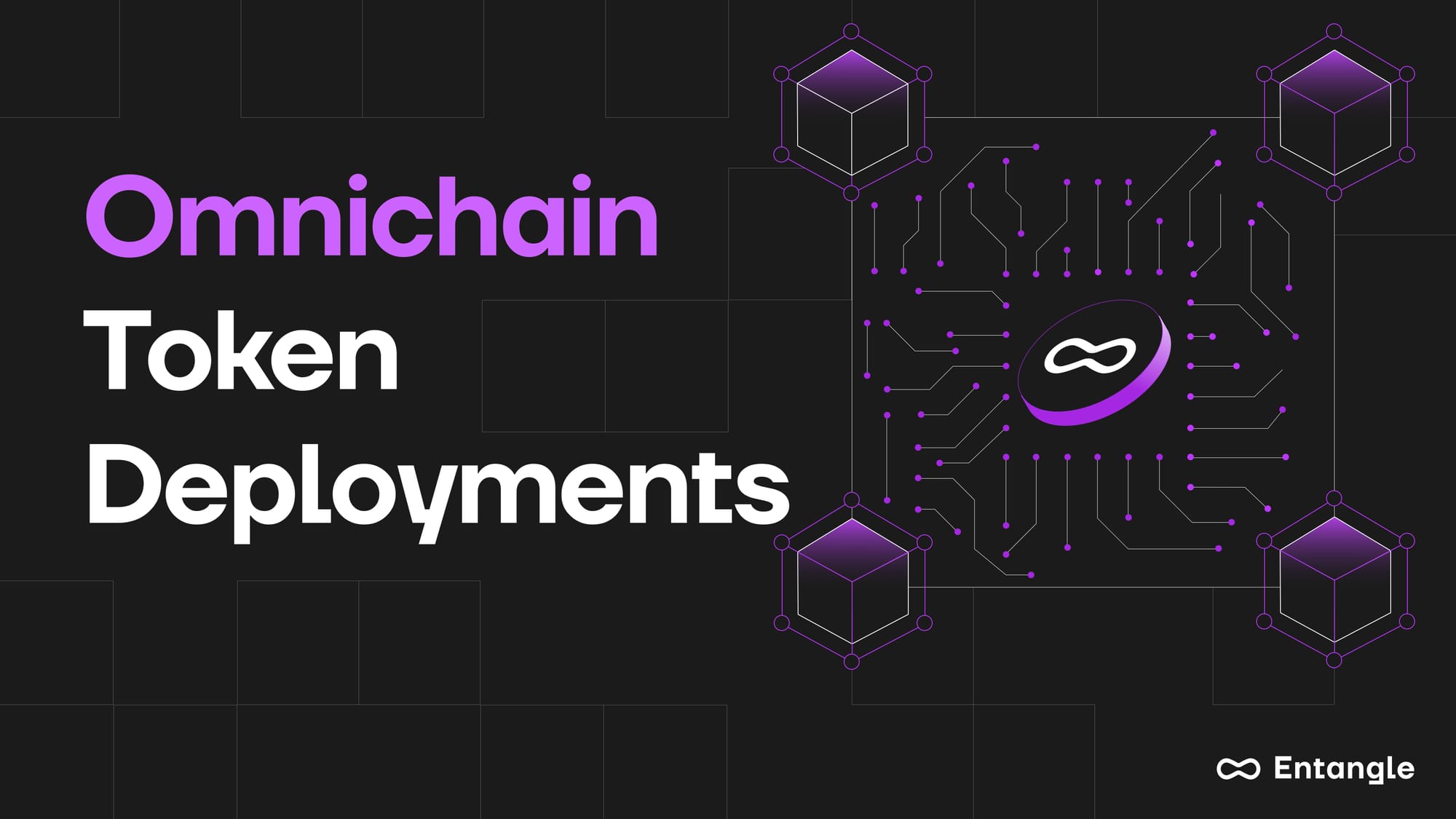Omnichain Token Deployments
The next step for tokenized assets.

At Entangle, we focus on creating a seamless Omnichain ecosystem for effortless cross-chain interactions. This blog explores the challenges of cross-chain token deployment, especially on low-liquidity chains lacking interoperable infrastructure. We demonstrate how omnichain technology can solve these issues, unlocking new and exciting use cases. Finally, we highlight Entangle's tools that facilitate these deployments and emphasize our critical role in this space.
Introduction
The essence of crypto is token issuance. From the ICO boom in 2017 to the 2024 staking wars, and the recent inscription hype on Bitcoin, crypto provides the most efficient way to issue tokens for everyone.
Additionally, crypto has the potential to tokenize almost all real-world assets, commonly referred to as Real World Assets (RWAs). For example, Ondo Finance, backed by BlackRock, tokenizes US Treasury securities. Another example is Gold DAO, which stores real gold in Swiss banks and leverages NFTs to represent varying quantities of gold.
When launching tokens across different chains, there are three main approaches.
- Multichain: A straightforward approach which involves deploying different instances on separate chains, which sacrifices liquidity but maintains the security of each chain in isolation.
- Cross-chain: Relies on cross-chain bridges to facilitate transfers between different, unrelated blockchain networks. This usually involves burning tokens on the original chain and minting them on the destination chain.
- Omnichain: Aims to connect all blockchain networks regardless of their architecture. The core of this approach involves an underlying chain handling the messaging and aggregating consensus.
Pain Points in Interoperability
Both multichain and cross-chain deployments—have their own drawbacks and fail to fully satisfy the demand for token deployment across different chains.
- Multichain: Assets are distributed across disconnected ecosystems, making it difficult to transfer these assets. Plus, this isn't the most capital-efficient method since it splits capital across different ecosystems.
- Cross-chain: The vulnerability of this method lies with the bridge operator. Since these bridges are centrally operated, they can be highly vulnerable to hacks.
How the Omnichain Approach Fixes These Issues
An omnichain solution is composed of several foundational elements, such as interoperability protocols, bridge mechanisms, and consensus algorithms. Typically, the interoperability protocol involves smart contracts on different chains acting as endpoints. The bridge mechanism relies on relayers or messengers to bridge assets and transactions, while the consensus algorithms depend on the underlying chain.
Before the advent of omnichain token deployment, developers had to deploy native assets across various chains, manage them, and negotiate liquidity with bridge protocols. Now, token deployment and liquidity management are both handled by the underlying omnichain infrastructure.
In addition to offering a seamless experience, a unified omnichain solution also provides enhanced security. As the adage goes, a chain is no stronger than its weakest link. Traditional cross-chain token deployments often result in many tokens being retained in bridge contracts, increasing the vulnerabilities with each additional bridge integrated. However, this is not the case with omnichain token deployment. Here, the only trust assumption is the underlying omnichain solution, without involving other third-party security assumptions.
From the perspective of developers, the primary concern of token deployment is balancing cost and efficiency. Omnichain solutions resolve this dilemma. For instance, if we deploy a token using an omnichain solution, we can deploy the token on a more affordable chain like Solana while simultaneously pulling users and liquidity from a more established chain like Ethereum, thus removing previous restrictions altogether.
How Omnichain Deployment Unlocks New Use Cases
Enabling omnichain token deployment unlocks the full potential of the omnichain system, as every crypto project relies on token deployment and liquidity management.
A key feature of the omnichain system is chain-agnosticism, meaning we are not restricted to EVM chains and rollups. The composability between EVM and non-EVM chains is an unexplored track. Building upon omnichain tokens, we can combine differentiated products together and create omnichain LEGO structures. For new developers entering the omnichain space, this provides ample users and liquidity from both EVM and non-EVM sources.
DeFi projects stand to benefit the most from omnichain token deployment, as liquidity is fundamental to their operations. Seamless asset transfer and interoperability across various blockchain environments give users access to a wider range of assets and liquidity pools, enhancing market efficiency and participant opportunities.
Additionally, omnichain solutions facilitate cross-chain transactions, enabling a truly chain-agnostic DeFi experience. For example, cross-chain liquidity pools can reduce slippage during swaps, while lending protocols can leverage assets across different chains to improve capital efficiency.
As new chains and rollups emerge, they often present attractive yield opportunities. An omnichain yield aggregator can capitalize on these opportunities, allowing users to engage in yield farming in liquidity pools across various blockchain networks from a single platform.
Beyond DeFi, omnichain DAO voting systems represent an often underappreciated sector, especially when the focus is primarily on liquidity. Today, many deployed tokens serve merely as governance tokens with no utility beyond voting. With omnichain token deployment, we can build a revolutionary decentralized voting mechanism where votes are as fluid and transferable across blockchain networks as assets. This approach not only leverages the lower costs of specific chains but also democratizes participation and amplifies the collective decision-making process.
How Entangle Powers Omnichain Deployment
At Entangle, we are building an innovative suite of tools designed to enable the omnichain functionality mentioned above. The foundational elements of Entangle's omnichain solution are Photon Messaging, and e-Bridge.
Entangle's solution for omnichain token deployment streamlines the process of distributing native assets across multiple blockchain networks. By leveraging the Photon Messaging, developers can easily set parameters and deploy tokens on different chains, both EVM and non-EVM, without the need for extensive technical expertise or resources.
Plus, Entangle's bridgeable token mechanism eliminates the need for wrapped assets, ensuring seamless and secure asset transfers. This method involves burning tokens on the originating chain and minting an equivalent amount on the destination chain, preserving the token's native properties.
Our solution ensures both flexibility and security in asset management, creating a unified, open, and inclusive blockchain ecosystem.